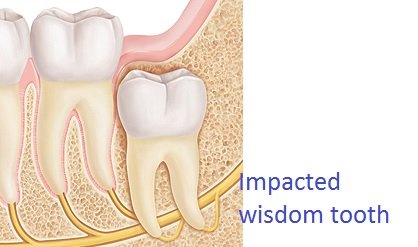Removing Wisdom Teeth
This article is about removing wisdom teeth.
What are wisdom teeth? What is their function?
Wisdom teeth! They are the third, final set of molars are developed during late teenage years and early twenties. Sometimes they’re a valuable asset to a person’s mouth if they’re actually healthy and aligned properly, but usually they’re totally misaligned and need to be removed.
Why do we extract wisdom teeth?
Wisdom teeth may be positioned horizontally. They can be angled away from or towards the mouth’s second set of molars. Or, they may be angled inwards or outwards. Wisdom teeth in such positions can crowd a person’s teeth, or damage them. They can also cause pain in the jaw and nerves.
Wisdom teeth can be more complicated than you think! They might be impacted, meaning they’re enclosed inside soft tissue, or in the jawbone. They can also be partially broken through the gums., which can allow an opening for bacteria to get in around the tooth and get infected. This may result in swolleness, painful jaw stiffness, and illness. These partially showing wisdom teeth are prone to tooth decay and gum disease since their awkward positioning makes brushing them very difficult.
Your dentist or your oral surgeon might advise that your wisdom teeth be removed even before problems develop. They would make this decision based on your X-rays, as well as your own discomfort while they’re growing. Removing the wisdom teeth sooner than later will prevent more complicated extractions. The younger patient is easier to extract wisdom teeth from, because their wisdom teeth roots are not developed fully yet, and the jawbone is much less dense. In more mature patients, the healing and recovery time is longer.
How are wisdom teeth removed?
A wisdom tooth that is fully broken through the gum can be removed easily, like any other tooth can be. However, wisdom teeth beneath gums, embedded in jawbone, will require an incision to be made in the gums. Then, the surgeon will remove the portion of bone that lies over the tooth. Often in this situation, the tooth will be cut into smaller pieces, then those pieces will be carefully extracted. Doing this instead of taking out big the tooth as a whole minimizes the amount of bone that would have to be removed to get the wisdom tooth out.
To learn more about removing wisdom teeth, please contact Bronte Dental office today for a free consultation.



